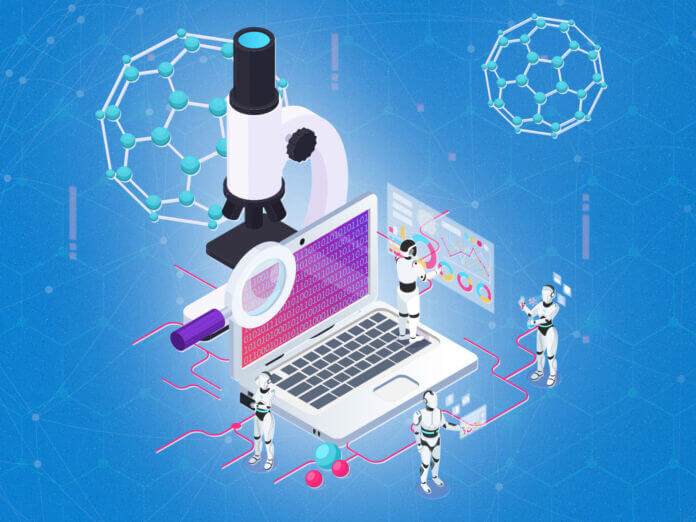
Emily Newton – July 22, 2024
Collected at: https://www.iotforall.com/what-are-the-benefits-of-integrating-nanotechnology-into-iot
Despite its small size, nanotechnology has an enormous impact on the Internet of Things (IoT). Engineers are experimenting with everything from a nanoscale battery for IoT devices to a nanomaterial-based display screen. Despite this technology’s potential, its implementation raises questions — what’s the point of nanoscale internet-connected objects?
Nanotechnology’s Role in IoT
Nanotechnology is a branch of science dedicated to discovering, designing, and developing nanoscale inventions by manipulating materials at a near-atomic scale. A nanometer is one-billionth of a meter, making it invisible to the naked eye. For reference, one human hair is about 100,000 nanometers wide.
Although nanotechnology may seem like a far-off, futuristic field, it has existed for decades. Its approximate market value will reach $332.73 billion by 2032, up from $79.14 billion in 2023, achieving an impressive compound annual growth rate of 17.6 percent.
Integrating nanotechnology into IoT often means engineers place nanostructures — engineered structures that are nanoscale in size — into internet-connected objects. They may use nanoparticles to create nanomaterials or nanofluids. Replacing conventional components enables improving the original device.
Examples of Nanotechnology in IoT
There are several examples of nanotechnology integrated into IoT devices or components.
Nanotechnology Battery for IoT
Every internet-connected object needs power. Most use batteries because they aren’t designed to remain constantly connected to an outlet. A nanotechnology battery for IoT has a higher energy density than a regular one even though it’s smaller, which lets devices charge faster and go longer between charges.
Lithium titanium oxide batteries are one example since they use lithium-titanate nanocrystals on a component’s surface instead of the conventional material. They can maintain 80 percent capacity after 25,000 charge cycles, meaning they can drain and recharge tens of thousands of times before showing signs of wear.
Nanomaterials for Displays
Multiple nanotechnology displays already exist in the form of OLEDs and QLEDs. Engineers use transparent, photoluminescent, or electroluminescent nanomaterials for most modern televisions and phones. This choice results in lower power consumption, longer battery life for IoT devices, and purer on-screen colors.
Nanotechnology Processors for IoT
IoT systems have processors embedded in them. These small components process data so the device can function properly and exchange information. Nanotechnology’s goal here is miniaturization. The more space there is, the more transistors — the building blocks of circuitry — they can fit. Since consumer electronics get smaller every year, downsizing is important.
IBM successfully developed a microchip in 2022 that was 2 nanometers in size. It contained over 50 billion transistors — each about five atoms in diameter — making the entire invention the size of a fingernail. Nanomaterials allowed it to increase the number of transistors on a single chip dramatically.
Why Integrate Nanotechnology?
Miniaturization is among the leading reasons companies integrate nanotechnology into IoT. Downsizing allows engineers to save space and fit more components into their design, potentially improving its computing performance and energy efficiency. Since gadgets like phones, laptops, and smartwatches get smaller yearly, becoming more compact is crucial.
Another benefit of integrating nanotechnology into internet-connected objects is energy efficiency. Incorporating nanomaterials, nanofluids, or nanostructures into a battery for IoT can improve its capacity, stability, charging speed, conductivity, or thermal regulation. These nanoscale power sources store more energy with less space.
Sustainability is one commonly overlooked benefit. Making IoT devices smaller and more energy efficient would shrink the carbon footprint of manufacturing facilities and data centers. The country could significantly reduce its electricity usage if everyone transitioned to nanotechnology-based technology.
Since nanomaterials can extend battery life, the U.S. may even be able to reduce the amount of electronic waste — the fastest-growing solid waste stream — it creates. According to the World Health Organization, the world recycled slightly over 17 percent of its 59 million tons of e-waste in 2019. Lengthening the life span of IoT devices would positively impact sustainability.
Potential Challenges to Overcome
Nanotechnology, as its futuristic overtone may suggest, is expensive. Although using it to design and develop internet-connected technologies can reduce expenses in the long term, it still requires a significant upfront commitment. In all likelihood, only larger companies with enough resources to risk will be able to experiment with it.
Technical challenges are also a concern since bringing these microscopic materials to the mass market would require a lot of effort. The tinier components are, the more difficult they are to produce quickly. Assembly-line production — the standard for manufacturing — isn’t necessarily the right fit.
Unfortunately, many manufacturers lack existing equipment or protocols that accommodate nanofabrication. After all, building parts 1 to 100 nanometers in diameter is complex. Overhauling systems, training workers, and installing new preparation tools would be costly and time-consuming.
The Future of IoT Nanotechnology
With inventions like a nanomaterial-based battery for IoT and nanoscale transistors, the future of nanotechnology in this field seems to have potential. For now, any large-scale applications are likely years away. Companies must overcome technical, cost, and implementation hurdles before progressing to mass-market applications.
However, numerous nanoscale-sized discoveries and inventions will likely emerge in the coming years. As the value of nanotechnologies and IoT continue increasing, more investors, business owners, and researchers will explore possible use cases. While their inventions may not hit shelves for years, their development speed will surely accelerate.

Leave a Reply